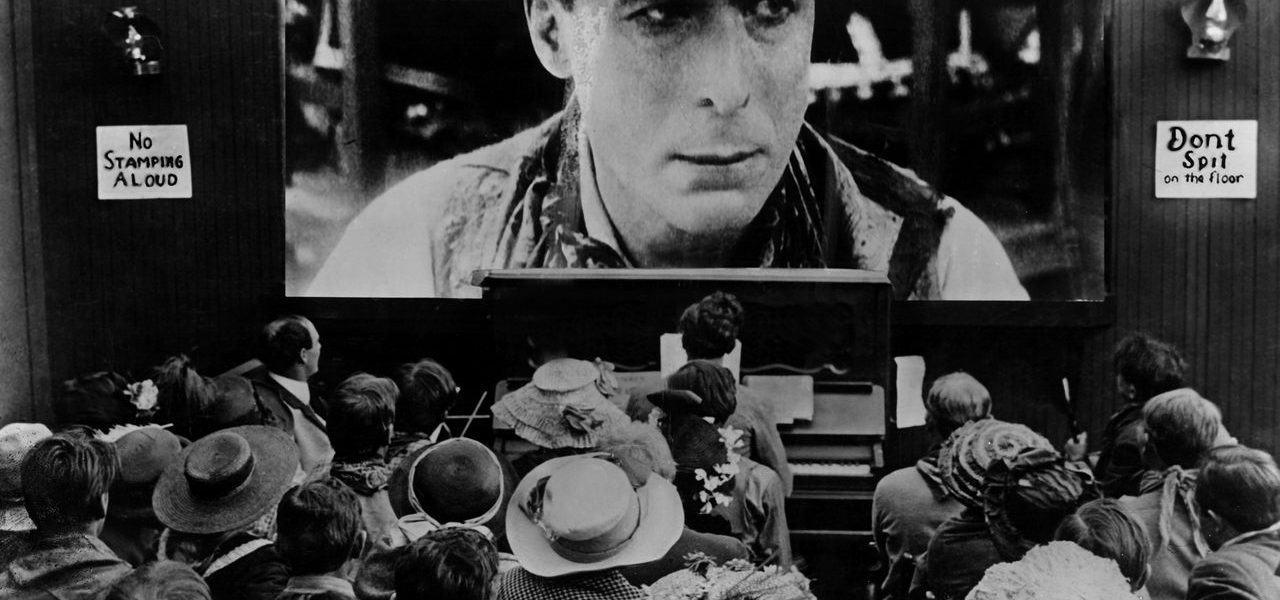A Decade That Roared With its own Growing Pains
ZekeFilm is 10 years old in 2022! We’re commemorating it with a year-long Film Admissions series wherein each month, we take on a decade (give or take) of cinema, in chronological order. As is always the case with Film Admissions, participants are encouraged to watch a film within that month’s topic that they’ve never seen but have been meaning to. The bigger and more well known the film, the better! Then, together, we share our individual thoughts on our findings.

Note: The following intro is taken and tweaked from my ZekeFilm Cover Story, “A 1920s Hollywood Overview”.
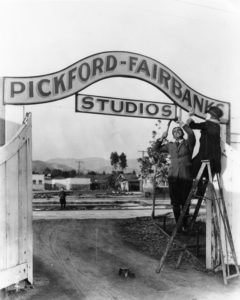
1920s Hollywood: An era of big movies, big personalities, and even bigger changes. The film industry had been fully birthed, and was running on all cylinders. Directors such as DeMille, Von Stroheim, Chaplin, and Keaton would leave inventive and cultural marks in their own burned-celluloid art, images that would affect the collective consciousness of America and beyond for all time.
The movie industry had been forged. Its rampant success gave way to fevered excess, and just around the corner, progress itself threatened the bubble to burst. As the cinematic values of its previous decade – namely, the old-world sheen of film language innovator D.W. Griffith – gave way to increasingly modern concerns, the scope, artistry, and popularity of film as a valid form of art and entertainment for all factions of society continued to spiral upward. Film, having settled more or less into a medium for telling narrative stories visually, and the ability to project in large “movie palaces”, had for the first time democratized popular entertainment. It was an energized time, and a lot of people in this newly happening place were getting very rich, very fast. The whole world wanted to see what the fuss was about. Hollywood’s reach quickly transcended American borders.
If all of that weren’t enough, this decade goes on to grant what’s all too commonly referred to as “The Advent Of Sound” – the single greatest revolution in the history of filmmaking. If D.W. Griffith’s The Birth of a Nation (ostensibly) transformed movies from a mere flickering novelty and into a bona fide art form accepted by the masses, then the also racially and ethnically shameful film The Jazz Singer – the first talking feature film – would be the film to turn that art form back into a novelty, at least for a while. (The racial and ethnic shame stem from the film’s star, Al Jolson, performing in blackface. Like the insulting racial stereotypes of The Birth of a Nation, here we have another film vital to history, impossible to ignore, but plagued with elements we now find wholeheartedly unacceptable.) But any artistic limitations that the arrival of talking pictures would bring – and there were many backward steps in order to account for the cumbersome new technology of recording voices while filming – it must be said that, when taken as the inevitability that it really was, synchronized sound brought a lot of pluses.
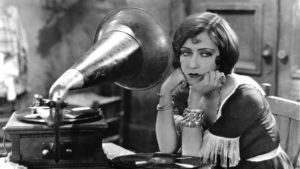
To put too fine a point on Hollywood of the 1920s would be reductive, reducing a rich, vibrant, complex, twisted and over-indulgent era into the world’s most glorified sermon illustration. That the innovations of the decade gave way to bloat followed by rumble-gut inducing stillness is no reason to turn our noses up at the feast that’s been left for us.
Now, myself and several contributors to the ZekeFilm website comment on some key 1920s films, from Hollywood and well beyond, that we’ve finally made time to see and write about. Enjoy, from newest (an essential 1930 talkie) to oldest (a grand silent epic of 1924), this particularly roaring edition of Film Admissions!
– Jim Tudor
All Quiet on the Western Front
Directed by Lewis Milestone/1930
by Max Foizey
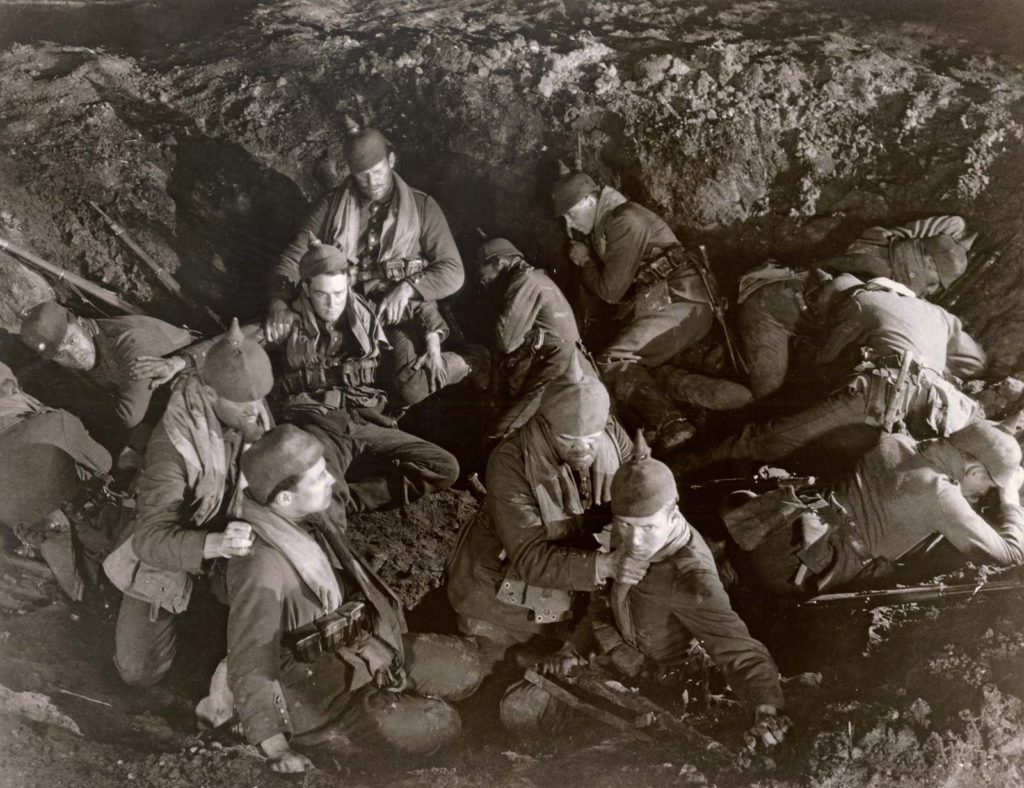
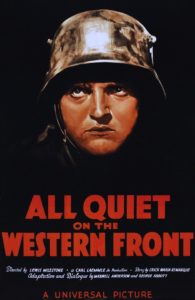
The war is right outside your door. A parade of soldiers marches the city streets past shopkeeper windows. German schoolboys rush to enlist after a rousing speech from their professor (Arnold Lucy). Who wouldn’t want to fight for their country? The boys dream of being in the middle of battle, fighting for the Fatherland, earning valor and respect. Eager to get to a battlefield, they are amused to find their town’s postmaster Himmelstoss (John Wray) is now their drill sergeant. Himmelstoss makes it clear that their social construct is different now. He outranks them and will do whatever it takes to turn them into soldiers. Seeing the horrified look on their young faces as they go from enthusiastic enlistees in the barracks to their first war zone is heartbreaking. These young men are scared. These young men cry. These young men question why they are ordered to kill.
Paul Baumer (Lew Ayres) goes on leave and finds it hard to be back home. He is uncomfortable with his friends and family thanking him for his service, showering him with praise. He goes to his old classroom and finds his professor giving the same speech about enlisting to a new crop of fresh-faced students. Paul responds with an impassioned appeal that dying for your country is ridiculous. That there are millions of boys dying for their countries, and for what? Depressed, he is anxious to return to the front lines of the war, where he feels more at home than his hometown. Soon he is reunited on the battlefield with his friend Stanislaus Katczinsky (Louis Wolheim), as the bullets fly.
Based on Erich Maria Remarque’s bestselling novel of the same name, All Quiet on the Western Front shows how little the experience has changed for a young person going off to war. The opening placard states that this is not an adventure film, as it is not an adventure to face your own death. The film aims for realism, to show the confusion, conflicting emotions, brutality, and futility of war.
A violent and intense film not for younger viewers, the overwhelming realities of war zones are brought to life with a striking sound design. David Broekman’s score is used sparingly, with director Lewis Milestone creating a punishing experience for the audience with near-continuous sounds of shelling, bullets, and explosions. Milestone was given the first Academy Award for Best Director, and the film won Best Picture. The film’s final images will stay with me.
All Quiet on the Western Front is a hugely influential anti-war film that does an impeccable job detailing the shared generational experiences of our young men and women who give their lives in times of war.
The Jazz Singer
Directed by Alan Crosland/1927
by Taylor Blake
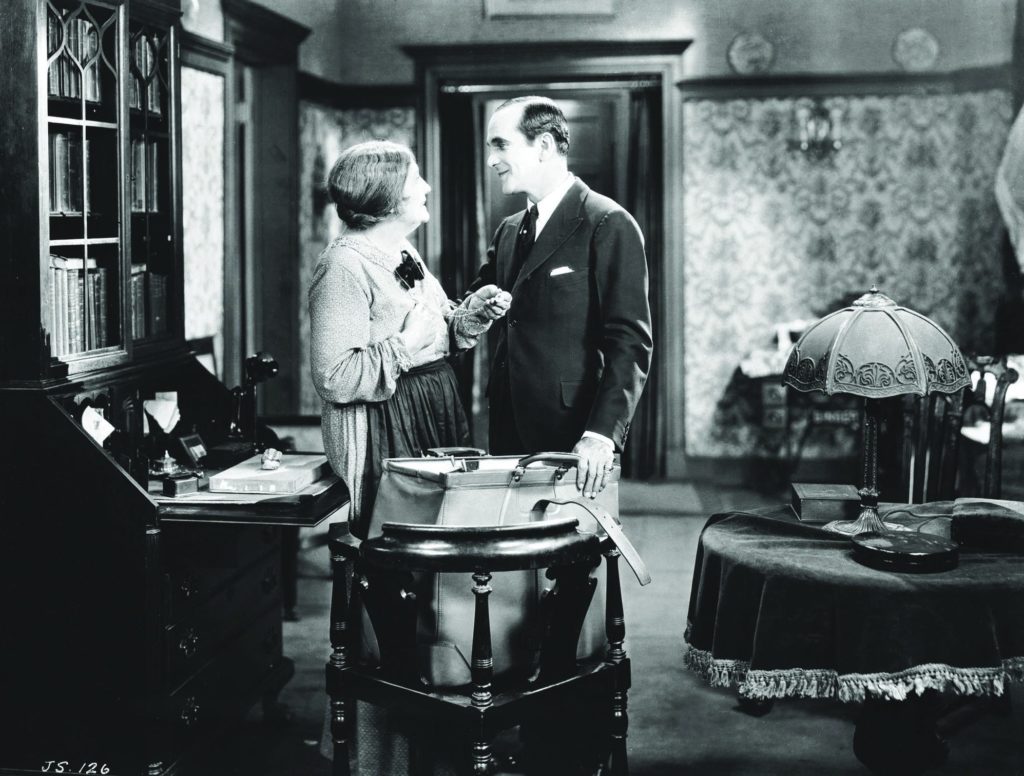
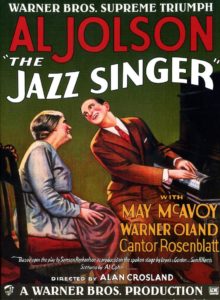
“You ain’t heard nothin’ yet!”
Even though I’d never watched The Jazz Singer, I’d seen that iconic moment plenty of times— there’s a good chance that the case for you, too. It’s one of the most memorable movie quotes because it’s not just fitting for its story but also for its legacy. In this 1927 hit (which made back seven times its budget), Al Jolson plays Jakie Rabinowitz, who ran away as a child when his conservative Jewish father (Warner Oland) forbid him to pursue music outside of the synagogue. As an adult, he’s on the cusp of becoming a stage success and falling in love with another performer (Mary McAvoy) when he reunites with his parents. Will his father accept him as his mother (Eugenie Besserer) always hoped? Or will Jack Robin (as he calls himself now) have to give up his shot at a career to restore his family?
Though filmmakers and studios had been toying with sound in movies well before The Jazz Singer, this is the idea that sold it to audiences. I have no idea if upon its release film execs walked onto the sets of silent films and told them to shut everything down à la Singin’ in the Rain, but they may as well have. Syncing up sound and picture is still one of the biggest, if not the biggest, revolutions in moviemaking. In my lifetime, we’ve seen the industry change thanks to the success and imitators of Toy Story, The Matrix, The Avengers, and Avatar, but those innovations ain’t nothin’ close to inviting one of the five senses to an art form in a new way. (If Smell-O-Vision ever returns, well, I suppose we can reevaluate.)
The Jazz Singer is still a silent picture for much of its run, but that only makes the songs more joyous when they arrive. It’s a perfect manifestation of how alive Jakie feels when he sings, and gives his voice more power when he’s finally able to use it. (Not that long ago, Best Picture winner The Artist used sound for the same effect.) While not every part of this film is accessible to today’s audiences (most glaring: one of the should-be-most-poignant scenes would ring truer if Jolson weren’t in blackface), but its use of sound is still narratively perfect. Perhaps that’s why Hollywood remade it longer after the sound barrier was broken in 1953, 1959, and 1980—even when we’ve heard somethin’, Jakie’s voice still had power because we could hear it.
A Page of Madness
Directed by Teinosuke Kinugasa/Japanese/1926
by Jeffrey Knight
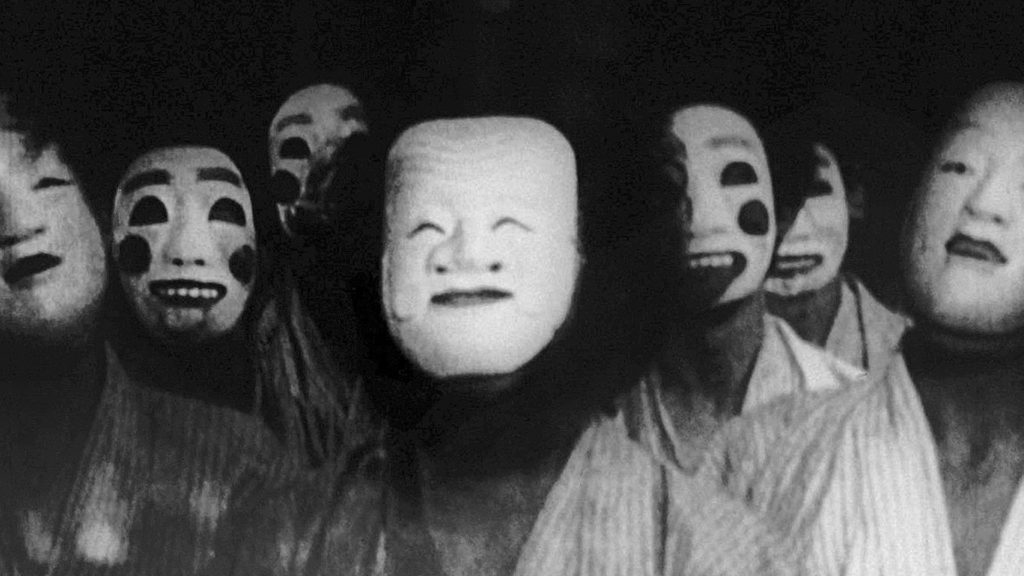
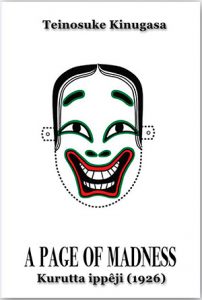
A Page of Madness is a Japanese silent film from 1926. It’s been described as a Japanese The Cabinet of Dr. Caligari, and I can see the resemblance. It can be seen as the forerunner of films like Un Chien Andalou and the works of Guy Maddin as well. It’s a riot of images, colliding together, overlapping. They form impressions, making for hallucinating sequences. It becomes as hard for the audience to figure out what is real as it is for the inmates in the asylum where the story takes place. One character stages a daring breakout, assaulting the doctor in charge. Or did they? At another point, someone wins a dresser in a raffle and is overjoyed. But did that actually happen? The Wikipedia page lays the story out for you, but the film doesn’t worry about making sure you’re on board with all of the characters and their relationship to one another (it’s silent, but there are no intertitles).
The film’s production history is almost as dramatic as anything that occurs within it. It’s budget was so tight, the filmmakers had to cover the sets with silver reflective material in order to magnify the output of their tiny set of lights. It was produced by an artist’s collective known as ‘The School of New Perceptions.’ It was directed by Teinosuke Kinugasa, who would have a celebrated career in film up until the 1960s, and be best known in the West for his technicolor Samurai films. It was written (at least in part) by Yasunari Kawabata, who would go on to win the Nobel Prize in Literature in 1968. The film was thought lost until 1971, when the director found a copy in storage.
It’s safe to say that audiences in 1926 hadn’t seen anything like it. It’s also a sure bet most audiences today haven’t either.
The Last Laugh
Directed by F.W. Murnau/ 1924
by Robert Hornak
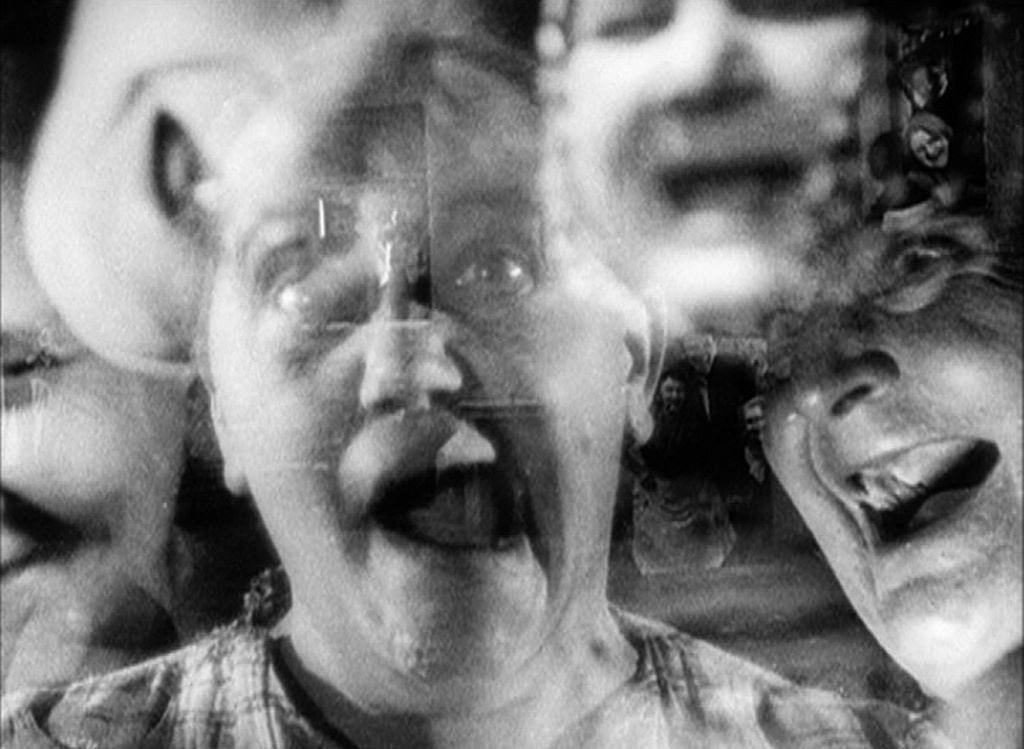
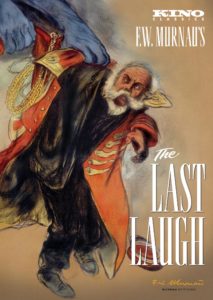
We follow an unnamed hotel doorman, played by Emil Jannings, so I’ll just call him Jannings, whose rotund pride, prancing about in his porter’s hat and big-buttoned longcoat, bouncing on his toes and saluting patrons like a workaday Santa Claus makes for a charming portrait of a man whose uniform imbues his entire identity with a sense of purpose. When his rather catty supervisor spies Jannings taking a much-deserved breather after hauling in a massive piece of luggage, he deems the doorman too old and feeble and replaces him by morning, forcing Jannings into the much lower, much less pride-inducing post of bathroom attendant. The rest is a study in how Jannings’ pride is unraveled, then transformed into generosity, but more so, how swiftly his poverty-bound family, friends, and neighbors – once they eventually find out about his lot – turn away from him now that he’s been defrocked of his association with wealth. The “last laugh” of the title refers to a post-script sequence wherein the “author” of the movie alerts us that he can’t just leave the poor man hanging, and the movie lays out a scenario where Jannings inherits a load of cash, comes back to the hotel to wine and dine himself, and treats his waiters, the help staff, and of course the doorman, to extravagant tips.
As the plot barely lifts out of the realm of parable or urban legend, the movie’s entertainment value is tied up largely in how well-executed it is – and in director F.W. Murnau’s hands it becomes a perfect example of a movie whose innovations have become such a matter of course that it’s easy to miss its import. Famously, the movie is among the first to move the camera this fluidly throughout the set. We’re behind or alongside Jannings and others as they walk across, say, an expansive lobby, moving through space with a grace we’re simply not used to seeing in a film from the era. The Last Laugh is also loaded with unusual point-of-view shots, the likes of which had not been seen – like the shots from Jannings’ perspective of people and buildings while he’s drunk, all distorted and nightmarish. Meanwhile, Murnau’s desire to completely unchain the movie from any previously-relied-upon stage conventions meant finding ways to reveal information without title cards – a feat he accomplished and which set the standard for most big directors of the era going forward.
But it wasn’t all just for technical show. Murnau smartly directs Jannings and cinematographer Karl Freund (who later lit Metropolis and Dracula) to portray the man’s situation not as a comedy – as some of the broad strokes of the movie’s description might imply – but as a kind of tragedy. Here Jannings the actor is key to our engagement, his big eyes emoting his strained acceptance of his new situation. Shots like the one depicting Jannings entering the hotel’s front revolving door while watching his replacement exit the other side and into Jannings’ old job are wantonly eye-catching for their own sake, but are also played with a bitter pathos as we watch his back slump and his eyes dissolve into hard realization. Later, Jannings being loaded down with towels for his new job, the stack slowly covering his face, could have been played for laughs, but is shot through with Jannings’ disappointment and resignation. For all the nerdy fun of seeing the things that were “firsts” in the movie, what makes it truly memorable is Jannings’ endearing, big-hearted depiction of famine and feast.
The Iron Horse
Directed by John Ford/1924
by Jim Tudor
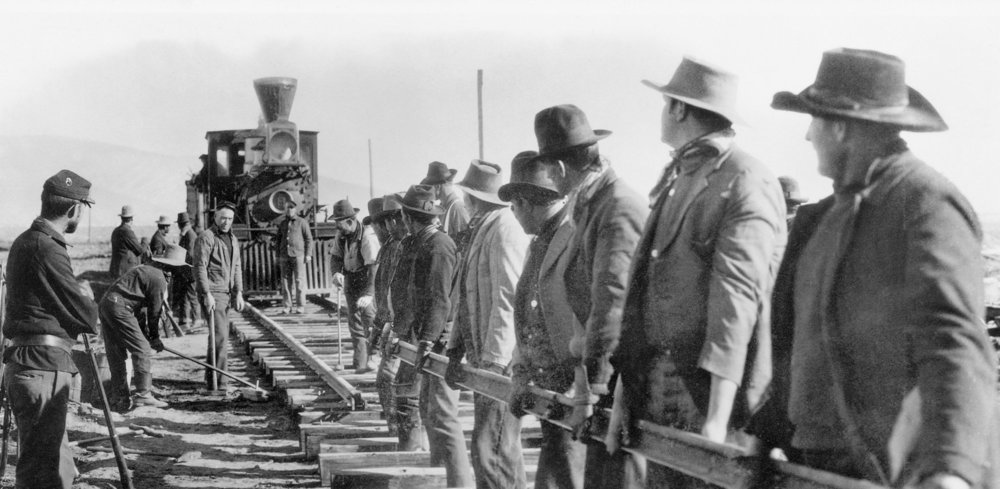
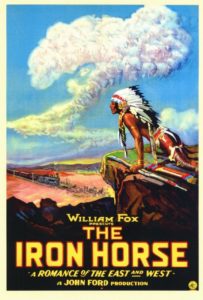
Though an avowed conductor in the ol’ choir of John Ford for going on two decades now, I had simply never hopped aboard his breakthrough endeavor, The Iron Horse. Finally, I made the effort and made the connection. At two and half hours, this silent large-scale historical epic of the early railroad always, in my mind, wielded a great presumed heaviness.
There’s no more efficient way to say it than, I was on the wrong track. Ford bursts from the station at full steam (with the exception of six or seven overly reverent opening text passages), rolling in with a steam-powered crowd-pleaser of yore. This, for many intents and purposes, is the movie that propelled John Ford onto the A-list of American directors. Starting with Straight Shooting in 1917, he’d been a maker of Westerns.
Much later, with all kinds of other acclaimed work in his holster, Ford would continue to voluntarily hitch himself to the genre. Over time, his depictions would fluctuate in regard to native peoples and the human cost of Manifest Destiny. The Iron Horse is a Western by strict definition, accounting for the prominence of those tropes. The Indians are marginalized if not fully villainized, the true bad guys being a few conniving white guys. They want to thwart the film’s grand victory: the connection of the dueling Union Pacific and Central Pacific railroad lines.
If that still sounds like a soot-coated viewing ordeal, keep in mind that Ford has a natural way of locating the personal in the (ostensibly) rigorously factual recreation he achieves. (Even the locomotive engines used in the film are said to be the real ones from the 1869 ajoinment. Likewise, Chinese laborers from then worked as chefs and whatnot for the massive production). Much of the movie is railroad wood and steel being manually laid down and drilled in the eventual race to the finish. Running on a parallel track is the chaste, pining love story between valiant Davy [George O’Brien] and Miriam [Madge Bellamy].
What we’re seeing appears to be very real. There’s a very certain satisfaction to be derived from the professional pit crew-esque efficiency of the track layers. The location photography is gorgeous throughout, an early-career solidification of what Ford would crumbly admit to being a gift of his: composition. Within the picturesque frames, there’s always a lot going on. Between the constant flurries of dirt being kicked up thanks to the many horses, cattle, manual labor, and roaring engines, it’s a miracle that any film ever made it through the gate clean. Thankfully, it did. Though The Iron Horse is currently not an easy ticket to get punched, it’s absolutely worth getting on board with.


